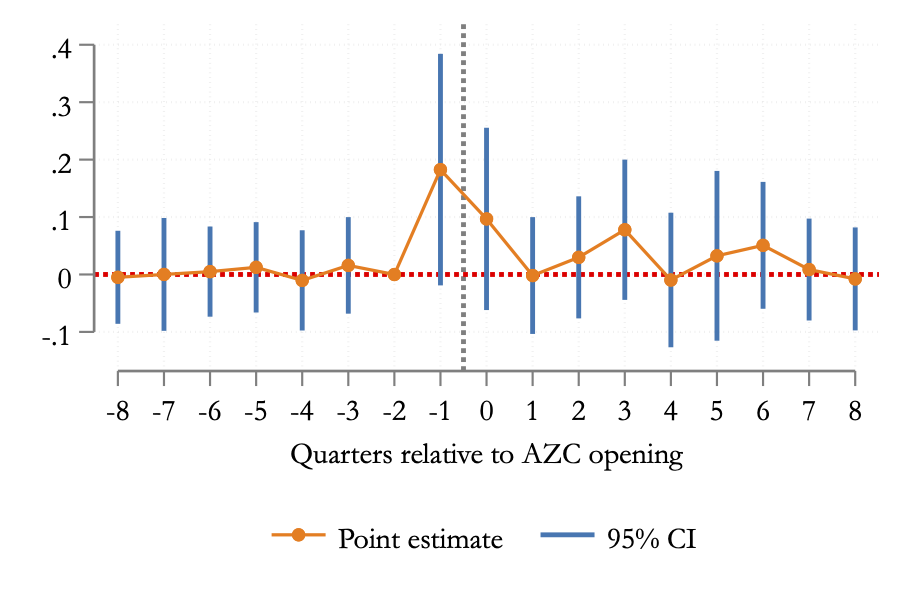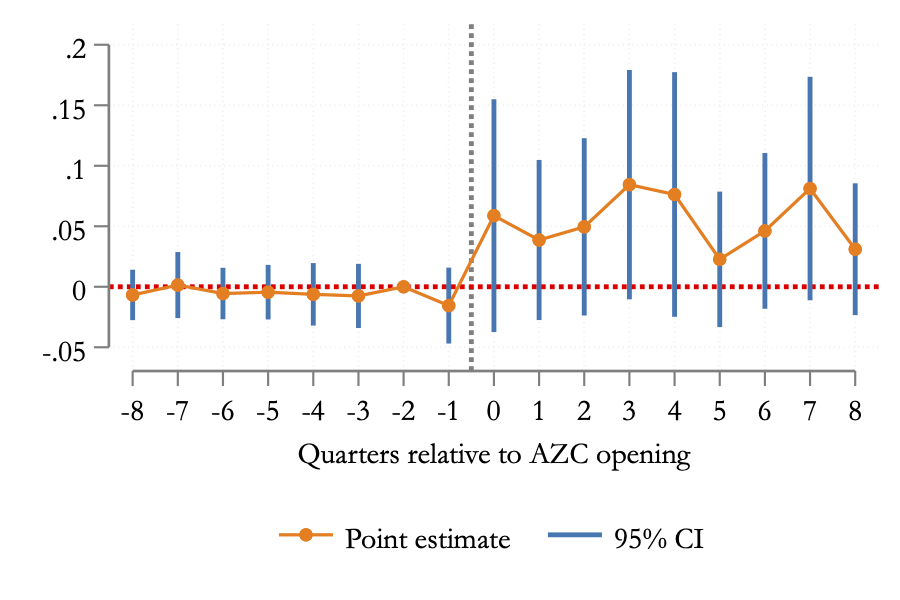From Tweets to Ballots
Refugee Inflows and Natives' Reactions
2015 and 2016 saw a sharp rise in the number of refugees that arrived in many countries in Europe. The following success of right-wing parties and an ensuing anti-immigration sentiment have led many scholars to study the role of local exposure to migrants for voting decisions and attitudes towards migration. In this paper we study the case of the Netherlands, paying particular attention to social media discourse. The focus on social media is important since social media plays an increasingly important role in the consumption of news and the discussion of political positions.
The figure below shows that with the arrival of refugees came a sharp rise in attention to refugees on social media as well as a gradual decline in support for refugees.


How did the sudden exposure to refugees affect social media discourse and eventually voting? We collect 100 million tweets, which we geolocate to the municipality level. Using text analysis techniques, we identify tweets about refugees and refugee-related topics. We combine this information with detailed data on the location and date of the opening of refugee reception centers. We then estimate a staggered difference-in-differences model where a municipality is treated if it opened a refugee reception center (asielzoekercentrum, AZC). The figure below shows the event study results.



The left panel of the figure shows that the share of posts about refugees increases significantly right before the opening of a new reception center; however, attention is lost again quickly. As opposed to this, support for refugees does not immediately reduce but gradually declines over time. The right panel, on the other hand, shows that with the arrival of refugees, natives pay more and more attention to religious minorities (Muslims).
Does the social media discourse translate to different choices in elections? We use extremely detailed voting data to answer this question. Since elections only take place once every couple of years, we cannot rely on our staggered difference-in-difference approach from before, but instead levy the geographical detail of our data. We are able to compare areas with about 1900 voters within the same municipality and vary only the distance to a newly opened reception center.

The above figure shows results of a difference-in-differences estimation using the share of anti-immigration parties as the outcome variable. As can be seen, we find that the vote share of anti-immigration parties increases significantly in areas within 3 km of newly opened reception centers, but not in areas further away. This aggregate effect, however, masks substantial heterogeneity, as the next figures show.
It is in areas with a low level of pre-existing salience of refugees that voters respond most strongly by voting for anti-immigration parties, whereas voters in municipalities with a high salience of refugees (or Islam) are actually less likely to vote for anti-immigration parties when exposed to refugees.


The results are not only important to understand the recent uptick in anti-immigration voting but also help policymakers plan where to locate new refugee reception centers.